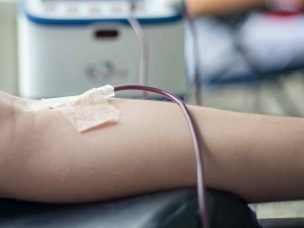With the shortage of medical providers and a growing population with increased incidence of chronic diseases, physicians are overworked. Studies show more than 50% of physicians experience burnout which is defined as a syndrome involving exhaustion, decreased sense of satisfaction, detachment, and decreased productivity. With increased burnout rates, the quality of medical care decreases and risk of medical errors increase along with increased incidence of depression, alcohol and drug use among medical providers. By understanding the causes of burnout, medical providers and healthcare organizations can strive to decrease the incidence.
One major factor of increased incidence of burnout is the workload balance. Medical providers work long hours resulting in a conflict of work and home life. Studies show higher risk of burnout among those working greater than 60 hours. Patients also have an increase in chronic diseases resulting in more complicated care yet the same amount of time allotted in clinic for these patients.
Another key contributor to increased burnout rates is the increase in clerical work. Due to use of electronic medical records, the interaction between medical providers and patients has become altered. Medical providers are forced to perform increased quality measures, more regulatory requirements, and increased documentation. In one study, there was a higher risk of burnout among physicians who utilized electronic medical records. The use of electronic health systems has also increased the accessibility to medical providers with the ability of patients to send secure messages via portal or email. This increases the work of providers by having to reply to these messages in addition to the number of patients seen in clinic. A direct observation study showed medical providers spending approximately 33% of work hours completing clerical work.
Another contributing factor to the increased burnout among physicians is the financial burdens of healthcare. There are decreased reimbursements from insurance companies and increased demand for physicians to see an increased number of patients. Contributing to the economic pressure is the change in legislative regulations resulting in increased financial incentives by meeting certain meaningful use criteria. Additionally, healthcare has become a business and has promoted patients as customers which increases pressure placed on medical providers. Ultimately, providers may feel limited on their medical decisions secondary to financial pressure.
The burnout of medical providers affects the healthcare of the United States negatively. Provides experiencing burnout are more likely to decrease the number of hours worked and have decreased job satisfaction. Ultimately, the increased number of burnout providers may result in decreased number of practicing providers, increasing healthcare shortages, and further propagating the risk of burnout among practicing providers.
In order to combat the growing epidemic of burnout among medical providers, healthcare organizations should focus on the health of physicians. Leaders should promote a better work-life balance and encourage providers to focus on their own physical and mental health by getting adequate rest, eating healthy, and exercising regularly. By first acknowledging the problem, leaders can focus on determining and addressing contributing factors of burnout. The use of scribes or team-based care models may lessen the amount of clerical work and burden among medical care providers. The health of our nation depends on its medical providers thus care should be taken to decrease and treat the burnout of physicians.
References:
Interventions to prevent and reduce physician burnout: a systematic review and meta-analysis by West, C. P., Dyrbye, L. N., Erwin, P. J., & Shanafelt, T. D.
Addressing physician burnout the way forward by Shanafelt, T. D., Dyrbye, L. N., West, C. P.
Relationship between clerical burden and characteristics of the electronic environment with physician burnout and professional satisfaction by Shanafelt, T. D., Dyrbye, L. N., Sinsky, C., Hasan, O., Satele, D., Sloan, J., West, C. P.
Physician burnout: the hidden health care crisis by Lacy, B. E. & Chan, J. L.










